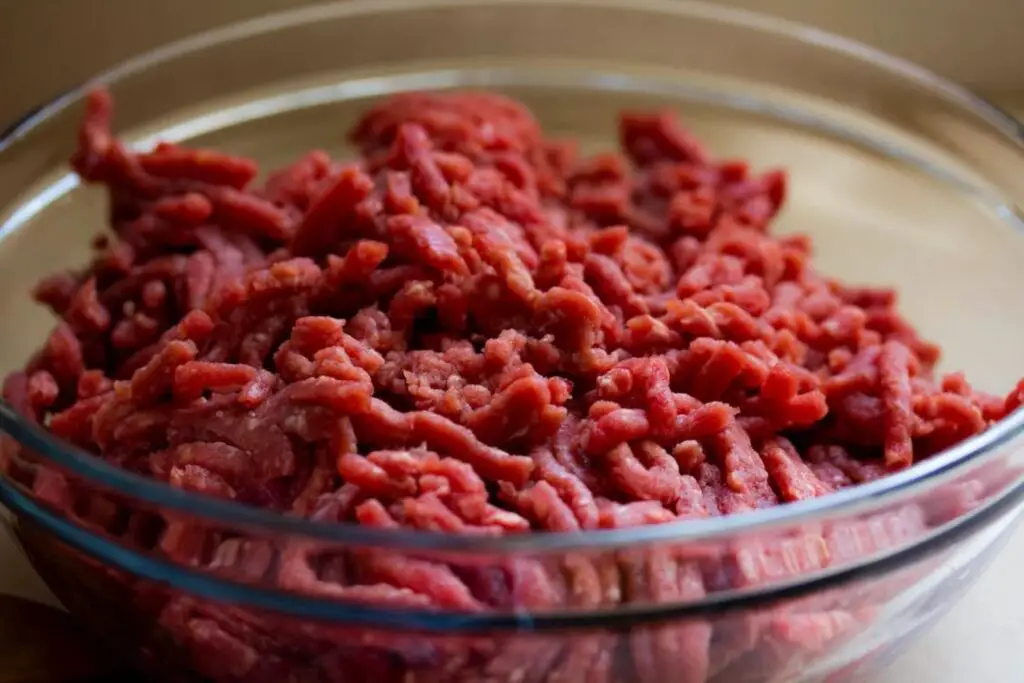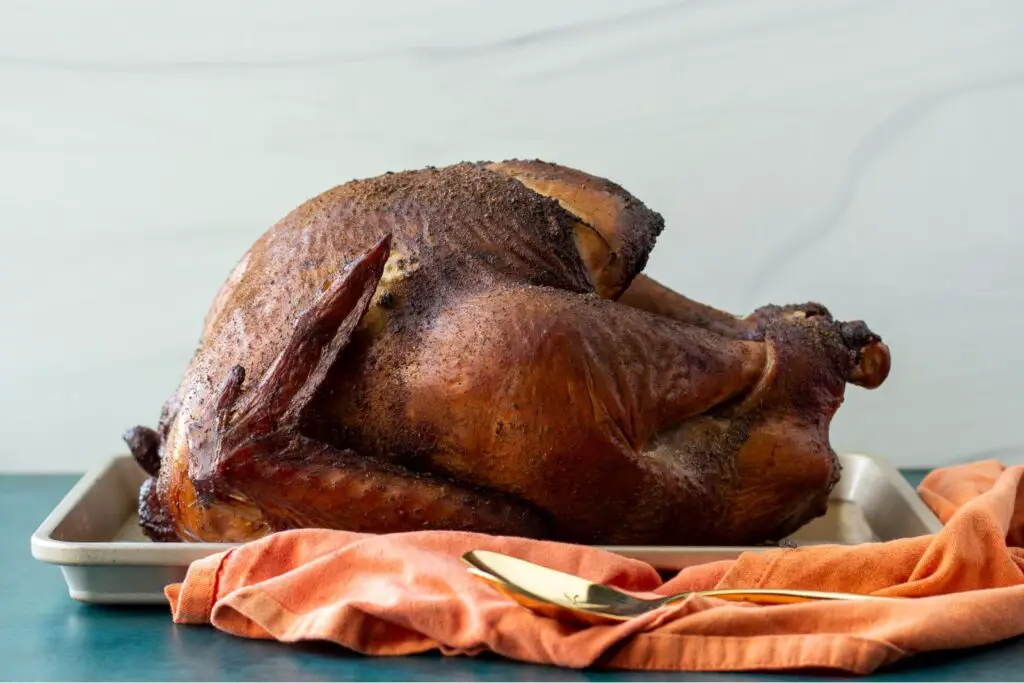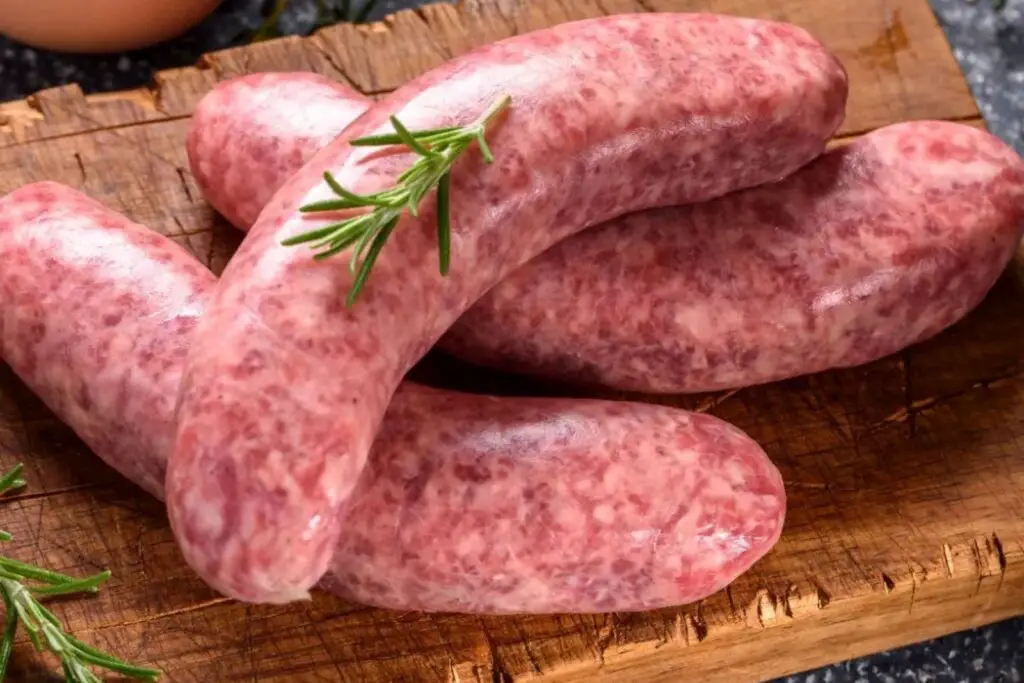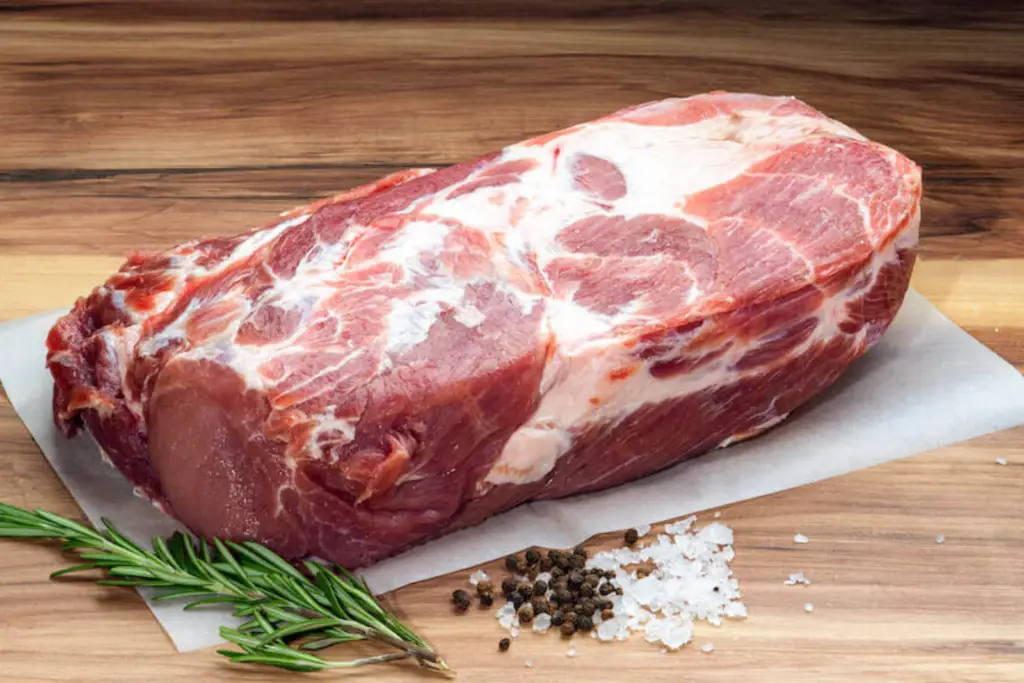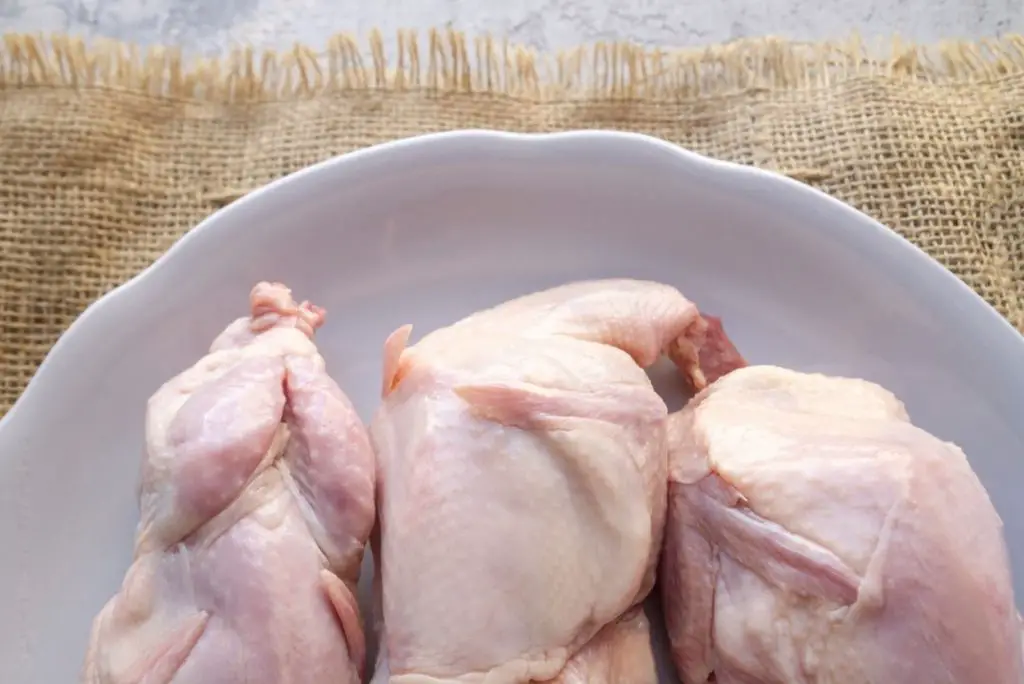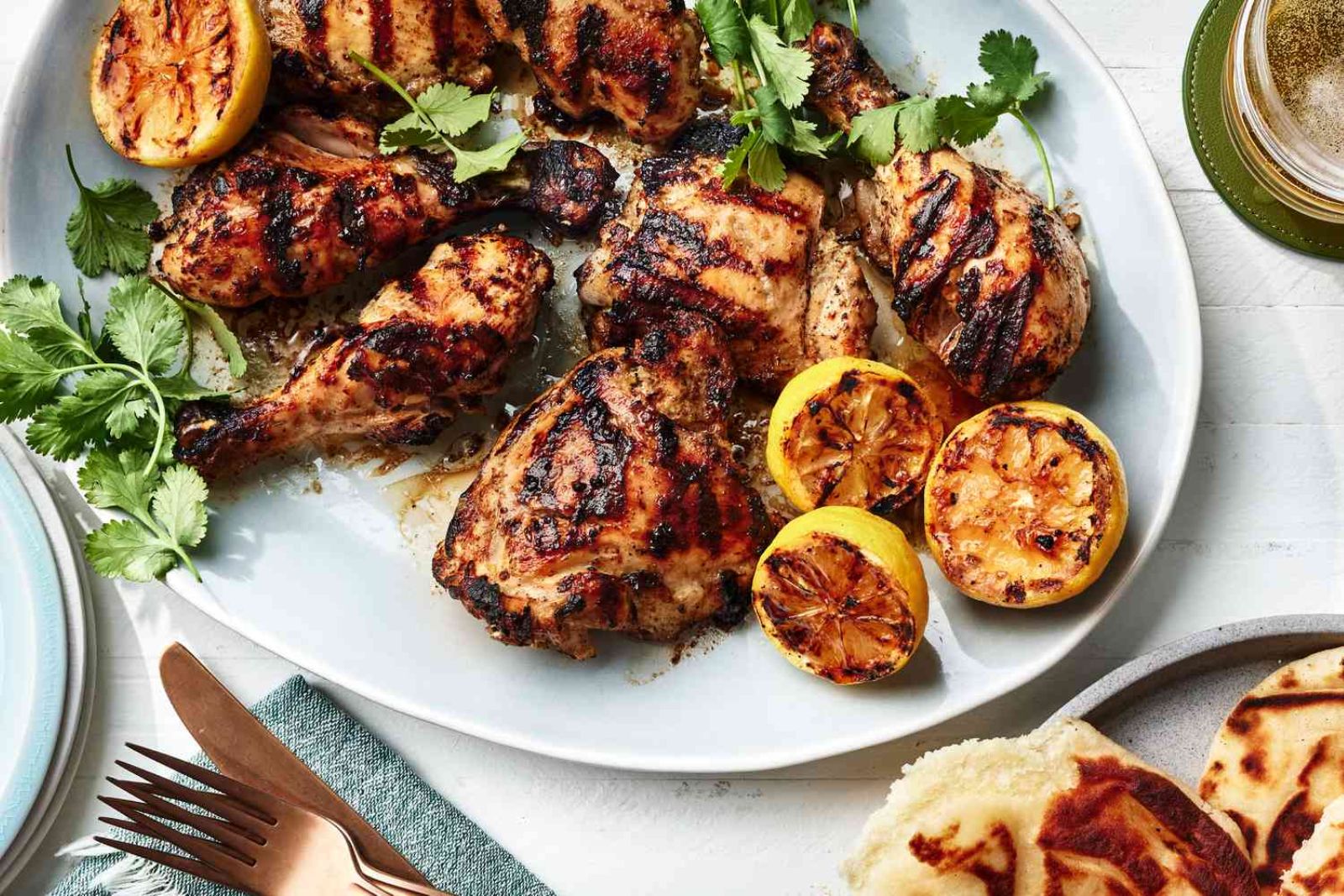
Grilled chicken is a beloved protein choice for many, thanks to its smoky flavor and tender texture. Whether you’ve prepared a surplus of grilled chicken or want to make the most of a sale at your local grocery store, freezing it is a smart way to extend its shelf life and enjoy this delicious dish at your convenience. In this article, we’ll walk you through the step-by-step process of freezing grilled chicken while ensuring it retains its flavor, moisture, and tenderness for future meals.
Here are the simple steps to freeze grilled chicken:
Step 1: Start with Quality Grilled Chicken
Before you begin the process of freezing grilled chicken, it’s imperative to emphasize the importance of starting with high-quality chicken. The quality of your initial chicken will significantly impact the taste, texture, and overall success of your frozen product.
If you’ve grilled the chicken yourself, it’s essential to ensure that it was properly cooked and handled during the grilling process. Here are some key points to consider:
- Freshness: Use fresh chicken that has not exceeded its recommended shelf life. Freshness ensures that the chicken has not started to deteriorate, preventing any unpleasant odors or flavors in the final frozen product.
- Proper Cooking: Make sure the chicken is thoroughly cooked to the recommended safe internal temperature, which is typically 165°F (74°C) for chicken. Proper cooking eliminates harmful bacteria and pathogens, ensuring food safety.
- Storage: If you’ve grilled the chicken in advance, store it in a refrigerator at a safe temperature (below 40°F or 4°C) until you’re ready to freeze it. Avoid leaving it at room temperature for extended periods, as this can promote bacterial growth.
If you’ve purchased pre-grilled chicken, carefully inspect the product to ensure its quality:
- Expiration Date: Check the packaging for the expiration or “use by” date. Ensure that the chicken is well within its recommended consumption timeframe.
- Appearance: Inspect the chicken for any visual signs of spoilage, such as off-color patches, an unusual slimy texture, or an unpleasant odor. These are indicators of spoilage and should be avoided.
- Packaging: Ensure that the packaging is intact and airtight, as any compromised packaging can lead to freezer burn during the freezing process.
Starting with high-quality grilled chicken is essential because freezing will not improve the chicken’s quality or safety. Instead, it preserves the chicken in its current state. If you begin with subpar chicken, you’ll end up with subpar frozen chicken, which can negatively affect the taste and texture of your dishes when you eventually use it. So, always prioritize quality when selecting grilled chicken for freezing to ensure that your future meals are both safe and delicious.
Step 2: Allow the Chicken to Cool
After you’ve finished grilling your chicken to perfection, the next crucial step is to allow it to cool down before preparing it for freezing. This may seem like a minor detail, but it plays a significant role in preserving the quality of your grilled chicken during storage.
Why is allowing the chicken to cool important?
- Preventing Condensation: When food is hot or warm, it releases steam, and when it’s placed in a container or wrapped for freezing while still warm, this steam can turn into condensation. Condensation is essentially moisture in vapor form that collects on the inside of your packaging. If this moisture isn’t controlled, it can lead to freezer burn.
- Avoiding Freezer Burn: Freezer burn occurs when moisture on the surface of the food freezes and then sublimates (changes directly from ice to vapor) back into the dry air of the freezer. This process causes dehydration, leaving the food with dry, discolored patches and an altered flavor. By allowing your grilled chicken to cool first, you minimize the risk of excessive moisture and subsequent freezer burn.
How to properly cool your grilled chicken:
- Use a Clean Surface: Place the grilled chicken on a clean plate or tray. Avoid using surfaces that might be contaminated with bacteria or other food residues.
- Room Temperature: Allow the chicken to cool down naturally to room temperature. This typically takes about 30 minutes. Avoid exposing it to drafts or extremely hot environments, as rapid cooling can also lead to condensation.
- Do Not Leave it Uncovered: Cover the chicken loosely with a clean kitchen towel or aluminum foil while it cools. This helps protect it from contaminants and minimizes the risk of moisture loss through evaporation.
Step 3: Portion the Chicken
Once your grilled chicken has cooled to room temperature, it’s time to think about how you’ll use it in the future and how to portion it effectively. This step not only streamlines your cooking process but also helps prevent unnecessary thawing and refreezing, which can compromise the chicken’s quality and safety.
Why is portioning the chicken important?
- Convenience: By dividing your grilled chicken into meal-sized portions, you make it more convenient to access and use in recipes. Instead of thawing and refreezing an entire batch, you can grab only what you need for a specific meal.
- Preservation of Quality: Every time you thaw and refreeze chicken, you introduce temperature fluctuations that can lead to texture changes and potentially diminish flavor. Portioning minimizes the need for this practice, preserving the chicken’s quality.
How to effectively portion your grilled chicken:
- Choose Your Portions: Consider how you typically use grilled chicken in your recipes. Do you prefer whole pieces for sandwiches, wraps, or salads? Would you like shredded chicken for tacos or casseroles? Or do you prefer bite-sized chunks for stir-fries or pasta dishes? Tailor your portions to your cooking preferences.
- Use Airtight Containers: If you’re using containers for portioning, select airtight containers that are appropriate for the quantity you plan to freeze. These containers will help maintain the chicken’s freshness.
- Label Portions: Consider labeling each portion if you’re using containers or resealable bags. Include the date of freezing and a brief description of the contents. This labeling ensures you can easily identify and use the oldest portions first.
- Consider Freezer Bags: If you’re using resealable freezer bags, flatten the chicken inside the bags to maximize freezer space and ensure even freezing. Remove as much air as possible to prevent freezer burn.
- Maintain Safe Temperatures: During the portioning process, be mindful of food safety. Keep the chicken at a safe temperature (below 40°F or 4°C) and avoid leaving it at room temperature for extended periods.
Step 4: Wrap the Chicken Properly
Now that you’ve successfully portioned your grilled chicken for freezing, it’s time to take the necessary steps to protect it from freezer burn. Proper wrapping and packaging are crucial in maintaining the chicken’s quality and preventing freezer burn, which can affect its texture and flavor.
Why is proper wrapping important?
- Preventing Freezer Burn: Freezer burn occurs when the moisture in the chicken is exposed to the dry air of the freezer, causing it to evaporate. This process leads to dehydration, resulting in dry and discolored patches on the chicken’s surface. Proper wrapping creates a barrier that helps prevent moisture loss and freezer burn.
- Maintaining Flavor and Texture: In addition to preventing freezer burn, adequate wrapping safeguards the chicken’s flavor and texture, ensuring it remains as close to its freshly grilled state as possible.
How to wrap your grilled chicken effectively:
- Plastic Wrap or Aluminum Foil: Wrap each portion of chicken tightly in plastic wrap or aluminum foil. Ensure there are no gaps or exposed areas where air can come into contact with the chicken. You can use multiple layers if necessary to provide extra protection.
- Airtight Containers: If you prefer using containers, choose airtight freezer-safe containers that can accommodate your chicken portions without excessive empty space. Make sure to seal the containers tightly to prevent air infiltration.
- Resealable Freezer Bags: Alternatively, resealable freezer bags can be used. Place the portioned chicken inside the bags and remove as much air as possible before sealing them. Flattening the chicken within the bags helps with efficient storage and prevents air pockets.
- Labeling: Regardless of your chosen wrapping method, it’s essential to label each package with the date of freezing and a brief description of the contents. This labeling allows you to keep track of how long the chicken has been in the freezer and makes it easy to identify specific portions when you’re ready to use them.
- Safe Handling: During the wrapping process, maintain proper food safety practices. Ensure that the chicken remains at a safe temperature (below 40°F or 4°C) and minimize its exposure to room temperature.
Step 5: Label and Date the Packages
Once your grilled chicken portions are properly wrapped and ready for the freezer, it’s crucial to take a moment to label each package. Labeling may seem like a minor detail, but it plays a significant role in ensuring food safety and preserving the quality of your chicken.
Why is labeling and dating packages important?
- Food Safety: Labeling your packages with the date of freezing helps you keep track of how long the chicken has been stored in the freezer. This information is vital for food safety, as it allows you to ensure that the chicken is used within a safe time frame.
- Rotation: By dating the packages, you can easily identify the older portions of chicken. This practice encourages you to use the older portions first, reducing the risk of freezer burn and food waste. It follows the “first in, first out” (FIFO) principle to maintain freshness.
How to label and date your frozen chicken packages:
- Permanent Marker: Use a permanent marker to write the date of freezing directly on the wrapping or container. Ensure the date is clear and easily visible.
- Description: You can also include a brief description of the contents if you have different types of grilled chicken (e.g., whole pieces, shredded, or marinated). This makes it even easier to identify the packages in your freezer.
- Organized Storage: Arrange your labeled packages in an organized manner in the freezer, with the older packages toward the front or top. This makes it simple to access the right portions when needed.
- Recheck Labels: Periodically review the labels in your freezer to ensure you’re using the chicken within the recommended storage time frame. This practice helps you avoid any potential food safety issues.
- Food Safety Guidelines: Be aware of recommended storage times for frozen chicken. While frozen chicken can last for several months, it’s best to consume it within 2-6 months for optimal taste and safety.
Step 6: Store in the Freezer
Once you’ve successfully wrapped, labeled, and dated your grilled chicken portions, the next critical step is to store them properly in the freezer. The way you store your chicken in the freezer can significantly impact its quality and safety.
Why is proper freezer storage important?
- Preventing Freezer Burn: Maintaining the correct temperature and conditions in the freezer is essential to prevent freezer burn. Freezer burn occurs when moisture in the food evaporates, leading to dehydration and the development of dry, discolored patches on the chicken’s surface.
- Preserving Quality: Storing your chicken at a consistent, low temperature ensures that it remains as close to its freshly grilled state as possible. This preservation of quality is essential for maintaining the chicken’s taste and texture.
How to store your grilled chicken in the freezer effectively:
- Coldest Part of the Freezer: Place your wrapped or containerized grilled chicken portions in the coldest part of your freezer. This is usually near the back or bottom, as these areas tend to maintain a more consistent and lower temperature.
- Minimize Temperature Fluctuations: Avoid frequent opening and closing of the freezer door, as temperature fluctuations can lead to moisture loss and potential freezer burn. Organize your freezer so that you can easily access the chicken without causing temperature disturbances.
- Space Between Packages: Ensure there is some space between packages to allow for proper airflow. This prevents the packages from sticking together and promotes even freezing.
- Keep the Freezer Well-Organized: Maintain an organized freezer with older packages toward the front or top, so you can use them first. This follows the “first in, first out” (FIFO) principle, which helps reduce food waste and ensures you use the chicken within its recommended storage time frame.
- Maintain a Consistent Temperature: Make sure your freezer maintains a temperature of 0°F (-18°C) or lower. Regularly check and adjust the freezer’s temperature settings to ensure it remains adequately cold.
Step 7: Use Within a Reasonable Time Frame
Now that your grilled chicken is safely stored in the freezer, it’s important to understand that even frozen foods have a limited shelf life. While frozen grilled chicken can remain safe to eat for an extended period, it’s essential to be mindful of the recommended storage duration for optimal taste and texture.
Why is it important to use frozen chicken within a reasonable time frame?
- Quality Preservation: The taste and texture of frozen grilled chicken can deteriorate over time. While it remains safe to eat beyond the recommended time frame, using it within the suggested period ensures that it maintains its desired quality and flavor.
- Minimizing Freezer Burn: As time passes, the risk of freezer burn increases. To prevent this, it’s advisable to consume your frozen chicken portions within a reasonable time frame. Freezer burn can alter the chicken’s taste and texture, making it less enjoyable.
Recommended time frame for frozen grilled chicken:
- 2-6 Months: For optimal taste and texture, aim to use your frozen grilled chicken within 2 to 6 months of freezing. Within this period, the chicken is likely to retain its original flavor and tenderness.
How to manage your frozen chicken portions effectively:
- First In, First Out (FIFO): Organize your freezer with older packages of chicken toward the front or top. This encourages you to use these portions before newer ones, ensuring that nothing is forgotten or left in the freezer for an extended period.
- Regular Inventory Checks: Periodically assess your freezer inventory to keep track of how long each portion has been stored. This helps you identify which portions need to be used sooner.
- Labeling: Continue to check the labels on your chicken packages for the freezing date. This information is crucial for managing the storage duration effectively.
- Plan Meals Accordingly: When planning your meals, consider using frozen chicken portions that have been in the freezer the longest. This practice aligns with the FIFO principle and helps prevent food waste.
- Safe Handling: Always thaw and cook your frozen chicken following recommended guidelines for food safety. Proper cooking ensures that the chicken is safe to eat, even if it has been in the freezer for several months.
Step 8: Thaw and Reheat Thoughtfully
Now that you’ve successfully stored your grilled chicken in the freezer and have diligently managed its duration of freezing, it’s time to discuss how to thaw and reheat it properly when you’re ready to enjoy your frozen treasure. Thawing and reheating are critical steps in maintaining the chicken’s quality, safety, and deliciousness.
Why is thawing and reheating thoughtfully important?
- Safe Consumption: Thawing chicken properly ensures that it reaches a safe temperature for consumption, eliminating any potential foodborne pathogens. Reheating not only brings the chicken to a safe temperature but also enhances its flavor and texture.
- Quality Preservation: Correct thawing and reheating methods help preserve the chicken’s tenderness and taste. Improper techniques can result in uneven cooking, making parts of the chicken overcooked and dry.
How to thaw and reheat your frozen grilled chicken thoughtfully:
Thawing:
- Refrigerator: The safest and most recommended method is to thaw your frozen grilled chicken in the refrigerator. Place the frozen chicken in a container or on a plate to catch any potential drips, and allow it to thaw overnight or for several hours, depending on the size of the portions. This gradual thawing method ensures even defrosting while keeping the chicken at a safe temperature.
- Cold Water: If you need to thaw the chicken quickly, you can use the cold water method. Place the frozen chicken in a sealed plastic bag and submerge it in cold water. Change the water every 30 minutes to maintain a safe temperature. This method is faster than the refrigerator but requires active monitoring.
- Microwave: If you’re in a hurry, you can use the microwave’s defrost function. However, use this method with caution, as it can partially cook the chicken in some areas, making it less tender. Follow your microwave’s instructions and use the lowest power setting.
Reheating:
- Grilling or Baking: To restore the grilled flavor and texture, consider grilling or baking your thawed chicken. Preheat your grill or oven to the desired temperature and cook the chicken until it reaches an internal temperature of 165°F (74°C). Basting with sauce or marinade can add extra flavor.
- Microwave: If you’re short on time, you can microwave the thawed chicken. Place it in a microwave-safe dish, cover it to prevent splatters, and use a medium or low power setting to heat it evenly. Make sure to check the internal temperature to ensure it reaches 165°F (74°C).
Other related questions
Can I refreeze grilled chicken?
Refreezing grilled chicken is not recommended as it can affect its quality and safety. Once thawed, bacteria can multiply, and refreezing may lead to texture changes and flavor deterioration. It’s best to use thawed grilled chicken within a safe time frame to maintain its freshness and taste.
Is it safe to refreeze grilled chicken if it has thawed in the refrigerator?
It’s generally safe to refreeze grilled chicken that has thawed in the refrigerator, as long as it hasn’t been left at room temperature for an extended period. However, it’s best to use the thawed chicken promptly to maintain quality and safety.
How do I know if the grilled chicken has gone bad after being frozen?
To determine if frozen grilled chicken has gone bad, examine it for signs of freezer burn, such as dry, discolored patches or an off odor. If the chicken exhibits any of these characteristics, it may no longer be safe or palatable to consume. Additionally, check for ice crystals on the packaging, which could indicate temperature fluctuations that may have affected its quality.
Can I freeze marinated grilled chicken?
Yes, marinated grilled chicken can be frozen successfully. Ensure the chicken is thoroughly coated with the marinade to preserve flavor. Seal it in an airtight container or wrap it tightly in plastic wrap or foil before freezing to prevent freezer burn.
What are some creative ways to use frozen grilled chicken in recipes?
Frozen grilled chicken can be a versatile ingredient in various dishes. You can use it in salads, sandwiches, wraps, stir-fries, pasta, and more. Thaw and reheat it thoughtfully, and you’ll have a convenient protein source for quick and delicious meals.
Can I freeze grilled chicken with bones and skin?
Yes, you can freeze grilled chicken with bones and skin. Ensure it’s properly wrapped or containerized to prevent freezer burn. Frozen chicken with bones and skin can be used in soups, stews, and casseroles for added flavor.
Can I freeze grilled chicken in sauce or gravy?
Freezing grilled chicken in sauce or gravy is possible. However, the sauce or gravy can alter in texture upon thawing. To maintain sauce quality, consider freezing the chicken and sauce separately, then combining them when reheating.
Should I season grilled chicken before freezing it?
Seasoning grilled chicken before freezing is optional. While it can enhance flavor, be mindful of the salt content, as salt can affect the chicken’s texture during freezing. You can also season it after thawing and before reheating.

